| Listing 1 - 10 of 27 | << page >> |
Sort by
|
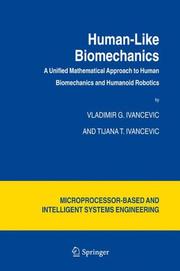
ISBN: 1281179817 9786611179816 1402041179 1402041160 9048170478 Year: 2006 Publisher: Dordrecht : Springer,
Abstract | Keywords | Export | Availability | Bookmark
 Loading...
Loading...Choose an application
- Reference Manager
- EndNote
- RefWorks (Direct export to RefWorks)
Human-Like Biomechanics is a comprehensive introduction into modern geometrical methods to be used as a unified research approach in two apparently separate and rapidly growing fields: mathematical biomechanics and humanoid robotics. The book contains six Chapters and an Appendix. The first Chapter is an Introduction, giving a brief review of mathematical techniques to be used in the text. The second Chapter develops geometrical basis of human-like biomechanics, while the third Chapter develops its mechanical basis, mainly from generalized Lagrangian and Hamiltonian perspective. The fourth Chapter develops topology of human-like biomechanics, while the fifth Chapter reviews related nonlinear control techniques. The sixth Chapter develops covariant biophysics of electro-muscular stimulation. The Appendix consists of two parts: classical muscular mechanics and modern path integral methods, which are both used frequently in the main text. The whole book is based on the authors’ own research papers in human-like biomechanics.
Human mechanics --- Biomechanics --- Robotics --- Mathematical models. --- Medicine. --- Human physiology. --- System theory. --- Physics. --- Statistical physics. --- Dynamical systems. --- Applied mathematics. --- Engineering mathematics. --- Vibration. --- Dynamics. --- Biomedicine. --- Human Physiology. --- Appl.Mathematics/Computational Methods of Engineering. --- Systems Theory, Control. --- Mathematical Methods in Physics. --- Statistical Physics, Dynamical Systems and Complexity. --- Vibration, Dynamical Systems, Control. --- Dynamical systems --- Kinetics --- Mathematics --- Mechanics, Analytic --- Force and energy --- Mechanics --- Physics --- Statics --- Cycles --- Sound --- Engineering --- Engineering analysis --- Mathematical analysis --- Mathematical statistics --- Natural philosophy --- Philosophy, Natural --- Physical sciences --- Dynamics --- Systems, Theory of --- Systems science --- Science --- Human biology --- Medical sciences --- Physiology --- Human body --- Clinical sciences --- Medical profession --- Life sciences --- Pathology --- Physicians --- Statistical methods --- Philosophy --- Automation --- Machine theory --- Biological mechanics --- Mechanical properties of biological structures --- Biophysics --- Contractility (Biology) --- Body mechanics, Human --- Human biomechanics --- Human movements --- Movements, Human --- Animal mechanics --- Human physiology --- Physical anthropology --- Kinesiology --- Systems theory. --- Mathematical physics. --- Mathematical and Computational Engineering. --- Complex Systems. --- Physical mathematics
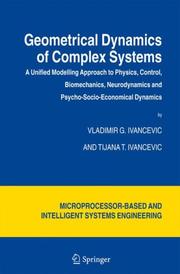
ISBN: 1280619481 9786610619481 140204545X 1402045441 Year: 2006 Publisher: Dordrecht : Springer,
Abstract | Keywords | Export | Availability | Bookmark
 Loading...
Loading...Choose an application
- Reference Manager
- EndNote
- RefWorks (Direct export to RefWorks)
This volume presents a comprehensive introduction into rigorous geometrical dynamics of complex systems of various natures. ""Complex systems"", in this book, are meant high-dimensional nonlinear systems, which can be (but not necessarily are) adaptive. This monograph proposes a unified geometrical approach to dynamics of complex systems of various kinds: engineering, physical, biophysical, psychophysical, sociophysical, econophysical, etc. As their names suggest, all these Multi-Input Multi-Output (MIMO) systems have something in common: the underlying physics. Using sophisticated machinery c
Nonlinear systems. --- Dynamics. --- System theory. --- Physics. --- Statistical physics. --- Dynamical systems. --- Applied mathematics. --- Engineering mathematics. --- Control engineering. --- Physics, general. --- Control. --- Appl.Mathematics/Computational Methods of Engineering. --- Systems Theory, Control. --- Mathematical Methods in Physics. --- Statistical Physics, Dynamical Systems and Complexity. --- Systems, Theory of --- Systems science --- Science --- Control engineering --- Control equipment --- Control theory --- Engineering instruments --- Automation --- Programmable controllers --- Engineering --- Engineering analysis --- Mathematical analysis --- Dynamical systems --- Kinetics --- Mathematics --- Mechanics, Analytic --- Force and energy --- Mechanics --- Physics --- Statics --- Mathematical statistics --- Natural philosophy --- Philosophy, Natural --- Physical sciences --- Dynamics --- Philosophy --- Statistical methods --- Systems, Nonlinear --- System theory --- Systems theory. --- Mathematical physics. --- Control and Systems Theory. --- Mathematical and Computational Engineering. --- Complex Systems. --- Physical mathematics
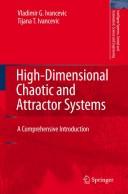
ISBN: 1280803673 9786610803675 1402054564 1402054556 9048173728 Year: 2007 Publisher: Dordrecht : Springer,
Abstract | Keywords | Export | Availability | Bookmark
 Loading...
Loading...Choose an application
- Reference Manager
- EndNote
- RefWorks (Direct export to RefWorks)
If we try to describe real world in mathematical terms, we will see that real life is very often a high–dimensional chaos. Sometimes, by ‘pushing hard’, we manage to make order out of it; yet sometimes, we need simply to accept our life as it is. To be able to still live successfully, we need tounderstand, predict, and ultimately control this high–dimensional chaotic dynamics of life. This is the main theme of the present book. In our previous book, Geometrical - namics of Complex Systems, Vol. 31 in Springer book series Microprocessor– Based and Intelligent Systems Engineering, we developed the most powerful mathematical machinery to deal with high–dimensional nonlinear dynamics. In the present text, we consider the extreme cases of nonlinear dynamics, the high–dimensional chaotic and other attractor systems. Although they might look as examples of complete disorder – they still represent control systems, with their inputs, outputs, states, feedbacks, and stability. Today, we can see a number of nice books devoted to nonlinear dyn- ics and chaos theory (see our reference list). However, all these books are only undergraduate, introductory texts, that are concerned exclusively with oversimpli?ed low–dimensional chaos, thus providing only an inspiration for the readers to actually throw themselves into the real–life chaotic dynamics.
Mechanics, Analytic. --- Dynamics. --- Dynamical systems --- Kinetics --- Mathematics --- Mechanics, Analytic --- Force and energy --- Mechanics --- Physics --- Statics --- Analytical mechanics --- System theory. --- Mathematical physics. --- Engineering mathematics. --- Biomedical engineering. --- Statistical physics. --- Complex Systems. --- Systems Theory, Control. --- Mathematical Methods in Physics. --- Mathematical and Computational Engineering. --- Biomedical Engineering and Bioengineering. --- Statistical Physics and Dynamical Systems. --- Mathematical statistics --- Clinical engineering --- Medical engineering --- Bioengineering --- Biophysics --- Engineering --- Medicine --- Engineering analysis --- Mathematical analysis --- Physical mathematics --- Systems, Theory of --- Systems science --- Science --- Statistical methods --- Philosophy --- Systems theory. --- Dynamical systems. --- Physics. --- Applied mathematics. --- Natural philosophy --- Philosophy, Natural --- Physical sciences --- Dynamics
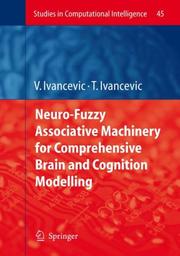
ISBN: 9783540474630 3540474633 9786610853311 128085331X 3540483969 Year: 2007 Publisher: Berlin ; New York : Springer,
Abstract | Keywords | Export | Availability | Bookmark
 Loading...
Loading...Choose an application
- Reference Manager
- EndNote
- RefWorks (Direct export to RefWorks)
Neuro–Fuzzy Associative Machinery for Comprehensive Brain and Cognition Modelling" is a graduate–level monographic textbook. It represents a comprehensive introduction into both conceptual and rigorous brain and cognition modelling. It is devoted to understanding, prediction and control of the fundamental mechanisms of brain functioning. The reader will be provided with a scientific tool enabling him to perform a competitive research in brain and cognition modelling.
Neural Networks (Computer) --- Brain. --- Cognition --- Fuzzy Logic. --- Models, Neurological. --- Neural networks (Neurobiology) --- Neural networks (Computer science) --- Fuzzy systems. --- Brain --- Réseaux neuronaux (Neurobiologie) --- Réseaux neuronaux (Informatique) --- Systèmes flous --- Cerveau --- physiology. --- Mathematical models. --- Modèles mathématiques --- Brain -- Mathematical models. --- Neural networks (Computer science). --- Neural networks (Neurobiology). --- Fuzzy systems --- Fuzzy Logic --- Models, Neurological --- Physiology --- Models, Biological --- Models, Theoretical --- Pattern Recognition, Automated --- Biological Science Disciplines --- Artificial Intelligence --- Logic --- Mathematical Concepts --- Central Nervous System --- Mental Processes --- Philosophy --- Natural Science Disciplines --- Investigative Techniques --- Psychological Phenomena and Processes --- Information Science --- Phenomena and Processes --- Computing Methodologies --- Nervous System --- Disciplines and Occupations --- Anatomy --- Humanities --- Psychiatry and Psychology --- Analytical, Diagnostic and Therapeutic Techniques and Equipment --- Civil Engineering --- Computer Science --- Applied Mathematics --- Neuroscience --- Engineering & Applied Sciences --- Civil & Environmental Engineering --- Human Anatomy & Physiology --- Health & Biological Sciences --- Mathematical models --- Systems, Fuzzy --- Artificial neural networks --- Nets, Neural (Computer science) --- Networks, Neural (Computer science) --- Neural nets (Computer science) --- Biological neural networks --- Nets, Neural (Neurobiology) --- Networks, Neural (Neurobiology) --- Neural nets (Neurobiology) --- Computer science. --- Artificial intelligence. --- Applied mathematics. --- Engineering mathematics. --- Computer Science. --- Artificial Intelligence (incl. Robotics). --- Appl.Mathematics/Computational Methods of Engineering. --- Engineering --- Engineering analysis --- Mathematical analysis --- AI (Artificial intelligence) --- Artificial thinking --- Electronic brains --- Intellectronics --- Intelligence, Artificial --- Intelligent machines --- Machine intelligence --- Thinking, Artificial --- Bionics --- Cognitive science --- Digital computer simulation --- Electronic data processing --- Logic machines --- Machine theory --- Self-organizing systems --- Simulation methods --- Fifth generation computers --- Neural computers --- Informatics --- Science --- Mathematics --- System analysis --- Fuzzy logic --- Artificial intelligence --- Natural computation --- Soft computing --- Cognitive neuroscience --- Neurobiology --- Neural circuitry --- Models --- Artificial Intelligence. --- Mathematical and Computational Engineering.
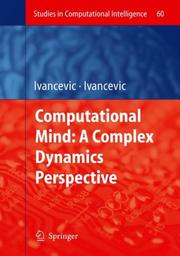
ISBN: 9783540714651 3540714650 9786610863686 1280863684 3540715614 Year: 2007 Publisher: Berlin, Germany ; New York, United States : Springer,
Abstract | Keywords | Export | Availability | Bookmark
 Loading...
Loading...Choose an application
- Reference Manager
- EndNote
- RefWorks (Direct export to RefWorks)
Computational Mind: A Complex Dynamics Perspective is a graduate–level monographic textbook in the field of Computational Intelligence. It presents a modern dynamical theory of the computational mind, combining cognitive psychology, artificial and computational intelligence, and chaos theory with quantum consciousness and computation. The book introduces to human and computational mind, comparing and contrasting main themes of cognitive psychology, artificial and computational intelligence. It presents brain/mind dynamics from the chaos theory perspective, including sections on chaos in human EEG, basics of nonlinear dynamics and chaos, techniques of chaos control, synchronization in chaotic systems and complexity in humanoid robots. This book presents modern theory of quantum computational mind, including sections on Dirac–Feynman quantum dynamics, quantum consciousness, and quantum computation using Josephson junctions. The book is designed as a one–semester course for computer scientists, engineers, physicists and applied mathematicians, both in industry and academia. It includes a strong bibliography on the subject and detailed index.
Computational intelligence. --- Dynamics. --- Cognitive psychology. --- Chaotic behavior in systems. --- Intelligence informatique --- Dynamique --- Psychologie cognitive --- Chaos --- Computational intelligence --- Dynamics --- Cognitive psychology --- Chaotic behavior in systems --- Applied Mathematics --- Civil Engineering --- Computer Science --- Engineering & Applied Sciences --- Civil & Environmental Engineering --- Dynamical systems --- Kinetics --- Intelligence, Computational --- Chaos in systems --- Chaos theory --- Chaotic motion in systems --- Psychology, Cognitive --- Medicine. --- Neurosciences. --- Artificial intelligence. --- Statistical physics. --- Dynamical systems. --- Applied mathematics. --- Engineering mathematics. --- Biomedicine. --- Appl.Mathematics/Computational Methods of Engineering. --- Statistical Physics, Dynamical Systems and Complexity. --- Artificial Intelligence (incl. Robotics). --- Cognitive Psychology. --- Cognitive science --- Psychology --- Engineering --- Engineering analysis --- Mathematical analysis --- Mathematics --- Mechanics, Analytic --- Force and energy --- Mechanics --- Physics --- Statics --- Mathematical statistics --- AI (Artificial intelligence) --- Artificial thinking --- Electronic brains --- Intellectronics --- Intelligence, Artificial --- Intelligent machines --- Machine intelligence --- Thinking, Artificial --- Bionics --- Digital computer simulation --- Electronic data processing --- Logic machines --- Machine theory --- Self-organizing systems --- Simulation methods --- Fifth generation computers --- Neural computers --- Neural sciences --- Neurological sciences --- Neuroscience --- Medical sciences --- Nervous system --- Clinical sciences --- Medical profession --- Human biology --- Life sciences --- Pathology --- Physicians --- Statistical methods --- Artificial intelligence --- Soft computing --- Differentiable dynamical systems --- Nonlinear theories --- System theory --- Consciousness. --- Mathematical and Computational Engineering. --- Complex Systems. --- Artificial Intelligence. --- Statistical Physics and Dynamical Systems. --- Apperception --- Mind and body --- Perception --- Philosophy --- Spirit --- Self
Book
ISBN: 9783540793564 3540793569 9786611855055 1281855057 3540793577 Year: 2008 Publisher: Berlin, Germany : Springer,
Abstract | Keywords | Export | Availability | Bookmark
 Loading...
Loading...Choose an application
- Reference Manager
- EndNote
- RefWorks (Direct export to RefWorks)
Complex Nonlinearity: Chaos, Phase Transitions, Topology Change and Path Integrals is a book about prediction & control of general nonlinear and chaotic dynamics of high-dimensional complex systems of various physical and non-physical nature and their underpinning geometro-topological change. The book starts with a textbook-like expose on nonlinear dynamics, attractors and chaos, both temporal and spatio-temporal, including modern techniques of chaos–control. Chapter 2 turns to the edge of chaos, in the form of phase transitions (equilibrium and non-equilibrium, oscillatory, fractal and noise-induced), as well as the related field of synergetics. While the natural stage for linear dynamics comprises of flat, Euclidean geometry (with the corresponding calculation tools from linear algebra and analysis), the natural stage for nonlinear dynamics is curved, Riemannian geometry (with the corresponding tools from nonlinear, tensor algebra and analysis). The extreme nonlinearity – chaos – corresponds to the topology change of this curved geometrical stage, usually called configuration manifold. Chapter 3 elaborates on geometry and topology change in relation with complex nonlinearity and chaos. Chapter 4 develops general nonlinear dynamics, continuous and discrete, deterministic and stochastic, in the unique form of path integrals and their action-amplitude formalism. This most natural framework for representing both phase transitions and topology change starts with Feynman’s sum over histories, to be quickly generalized into the sum over geometries and topologies. The last Chapter puts all the previously developed techniques together and presents the unified form of complex nonlinearity. Here we have chaos, phase transitions, geometrical dynamics and topology change, all working together in the form of path integrals. The objective of this book is to provide a serious reader with a serious scientific tool that will enable them to actually perform a competitive research in modern complex nonlinearity. It includes a comprehensive bibliography on the subject and a detailed index. Target readership includes all researchers and students of complex nonlinear systems (in physics, mathematics, engineering, chemistry, biology, psychology, sociology, economics, medicine, etc.), working both in industry/clinics and academia.
Nonlinear control theory. --- Dynamics. --- Nonlinear systems. --- Commande non linéaire --- Dynamique --- Systèmes non linéaires --- Nonlinear systems -- Mathematical models. --- Stochastic systems. --- Nonlinear control theory --- Dynamics --- Nonlinear systems --- Operations Research --- Civil & Environmental Engineering --- Engineering & Applied Sciences --- Systems, Nonlinear --- Dynamical systems --- Kinetics --- Physics. --- Ergodic theory. --- Statistical physics. --- Dynamical systems. --- Applied mathematics. --- Engineering mathematics. --- Vibration. --- Statistical Physics, Dynamical Systems and Complexity. --- Vibration, Dynamical Systems, Control. --- Dynamical Systems and Ergodic Theory. --- Appl.Mathematics/Computational Methods of Engineering. --- Mathematics --- Mechanics, Analytic --- Force and energy --- Mechanics --- Physics --- Statics --- System theory --- Control theory --- Nonlinear theories --- Differentiable dynamical systems. --- Complex Systems. --- Mathematical and Computational Engineering. --- Statistical Physics and Dynamical Systems. --- Mathematical statistics --- Engineering --- Engineering analysis --- Mathematical analysis --- Differential dynamical systems --- Dynamical systems, Differentiable --- Dynamics, Differentiable --- Differential equations --- Global analysis (Mathematics) --- Topological dynamics --- Cycles --- Sound --- Statistical methods --- Ergodic transformations --- Continuous groups --- Mathematical physics --- Measure theory --- Transformations (Mathematics)
Book
ISBN: 9048133491 9786612836244 9048133505 1282836242 Year: 2010 Publisher: Dordrecht ; London : Springer,
Abstract | Keywords | Export | Availability | Bookmark
 Loading...
Loading...Choose an application
- Reference Manager
- EndNote
- RefWorks (Direct export to RefWorks)
Quantum Neural Computation is a graduate-level monographic textbook. It presents a comprehensive introduction, both non-technical and technical, into modern quantum neural computation. Classical computing systems perform classical computations (i.e., Boolean operations, such as AND, OR, NOT gates) using devices that can be described classically (e.g., MOSFETs). On the other hand, quantum computing systems perform classical computations using quantum devices (quantum dots), that is, devices that can be described only using quantum mechanics. Any information transfer between such computing systems involves a state measurement. This book describes this information transfer at the edge of classical and quantum chaos and turbulence, where mysterious quantum-mechanical linearity meets the brain's even more mysterious nonlinear complexity, in order to perform super–high–speed and error–free computations. This volume describes a crossroad between quantum field theory, brain science and computational intelligence.
Computer science. --- Neural networks (Computer science). --- Quantum computers. --- Quantum computers --- Neural networks (Computer science) --- Computer Science --- Mechanical Engineering - General --- Engineering & Applied Sciences --- Mechanical Engineering --- Information Technology --- Artificial Intelligence --- Natural computation. --- Biologically-inspired computing --- Bio-inspired computing --- Natural computing --- Artificial neural networks --- Nets, Neural (Computer science) --- Networks, Neural (Computer science) --- Neural nets (Computer science) --- Artificial intelligence. --- Neurobiology. --- Quantum physics. --- Spintronics. --- Applied mathematics. --- Engineering mathematics. --- Computer Science. --- Artificial Intelligence (incl. Robotics). --- Appl.Mathematics/Computational Methods of Engineering. --- Quantum Physics. --- Quantum Information Technology, Spintronics. --- Computers --- Bionics --- Electronic data processing --- Artificial intelligence --- Natural computation --- Soft computing --- Quantum theory. --- Artificial Intelligence. --- Mathematical and Computational Engineering. --- Neurosciences --- Quantum dynamics --- Quantum mechanics --- Quantum physics --- Physics --- Mechanics --- Thermodynamics --- Engineering --- Engineering analysis --- Mathematical analysis --- AI (Artificial intelligence) --- Artificial thinking --- Electronic brains --- Intellectronics --- Intelligence, Artificial --- Intelligent machines --- Machine intelligence --- Thinking, Artificial --- Cognitive science --- Digital computer simulation --- Logic machines --- Machine theory --- Self-organizing systems --- Simulation methods --- Fifth generation computers --- Neural computers --- Mathematics --- Fluxtronics --- Magnetoelectronics --- Spin electronics --- Spinelectronics --- Microelectronics --- Nanotechnology
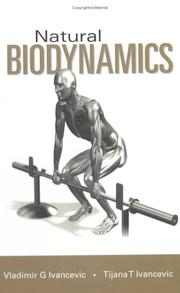
ISBN: 1281899151 9786611899158 9812703160 9812565345 9789812565341 9789812703163 9781281899156 9812565345 6611899154 Year: 2005 Publisher: Hackensack, N.J. : World Scientific,
Abstract | Keywords | Export | Availability | Bookmark
 Loading...
Loading...Choose an application
- Reference Manager
- EndNote
- RefWorks (Direct export to RefWorks)
This comprehensive volume is a graduate-level text in human biodynamics, written in the unified categorical language of modern differential geometry and topology. Combining mathematics, physics and robotics with human physiology, this is the first book that describes all levels of human biodynamics, from musculo-skeletal mechanics to the higher brain functions. The book develops and uses a variety of research methods, ranging from chaos theory and Haken's synergetics, through quantum mechanics, to nonlinear control and artificial intelligence, to provide the means to understand, predict and co
Human physiology. --- Human biology. --- Human physiology --- Human biology --- Medical sciences --- Physiology --- Human body --- Biology --- Physical anthropology --- Mathematical models.
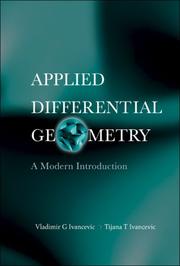
ISBN: 1281121681 9786611121686 9789812700721 9812770720 1429496525 9781429496520 9789812770721 9781281121684 9812706143 Year: 2007 Publisher: Hackensack, NJ : World Scientific,
Abstract | Keywords | Export | Availability | Bookmark
 Loading...
Loading...Choose an application
- Reference Manager
- EndNote
- RefWorks (Direct export to RefWorks)
This graduate-level monographic textbook treats applied differential geometry from a modern scientific perspective. Co-authored by the originator of the world's leading human motion simulator - "Human Biodynamics Engine", a complex, 264-DOF bio-mechanical system, modeled by differential-geometric tools - this is the first book that combines modern differential geometry with a wide spectrum of applications, from modern mechanics and physics, via nonlinear control, to biology and human sciences. The book is designed for a two-semester course, which gives mathematicians a variety of applications
Geometry, Differential. --- Mathematical physics. --- Physical mathematics --- Physics --- Differential geometry --- Mathematics
Book
ISBN: 9812819282 9789812819284 9789812819277 9812819274 Year: 2008 Publisher: Hackensack, NJ : World Scientific,
Abstract | Keywords | Export | Availability | Bookmark
 Loading...
Loading...Choose an application
- Reference Manager
- EndNote
- RefWorks (Direct export to RefWorks)
This is a unique 21st-century monograph that reveals a basic, yet deep understanding of the universe, as well as the human mind and body - all from the perspective of quantum mechanics and quantum field theory.This book starts with both non-mathematical and mathematical preliminaries. It presents the basics of both non-relativistic and relativistic quantum mechanics, and introduces Feynman path integrals and their application to quantum fields and string theory, as well as some non-quantum applications. It then describes the quantum universe in the form of loop quantum gravity and quantum cosm
Consciousness. --- Feynman integrals. --- Mind and body. --- Physics --- Quantum field theory. --- Quantum theory. --- Quantum dynamics --- Quantum mechanics --- Quantum physics --- Mechanics --- Thermodynamics --- Relativistic quantum field theory --- Field theory (Physics) --- Quantum theory --- Relativity (Physics) --- Body and mind --- Body and soul (Philosophy) --- Human body --- Mind --- Mind-body connection --- Mind-body relations --- Mind-cure --- Somatopsychics --- Brain --- Dualism --- Philosophical anthropology --- Holistic medicine --- Mental healing --- Parousia (Philosophy) --- Phrenology --- Psychophysiology --- Self --- Feynman diagrams --- Multiple integrals --- Apperception --- Mind and body --- Perception --- Philosophy --- Psychology --- Spirit --- Philosophy. --- Psychological aspects
| Listing 1 - 10 of 27 | << page >> |
Sort by
|

 Search
Search Feedback
Feedback About UniCat
About UniCat  Help
Help News
News